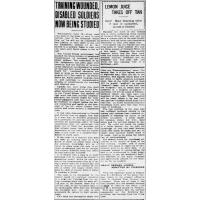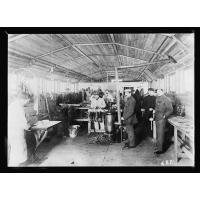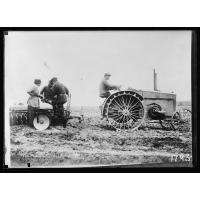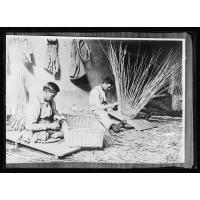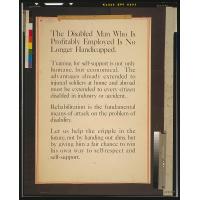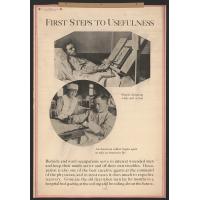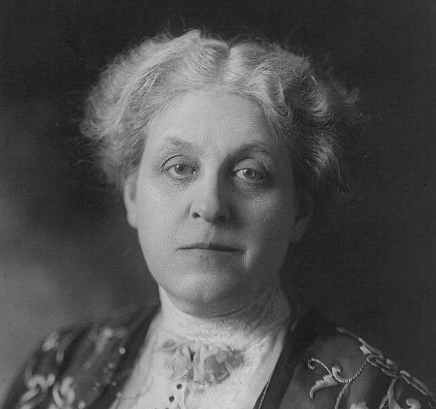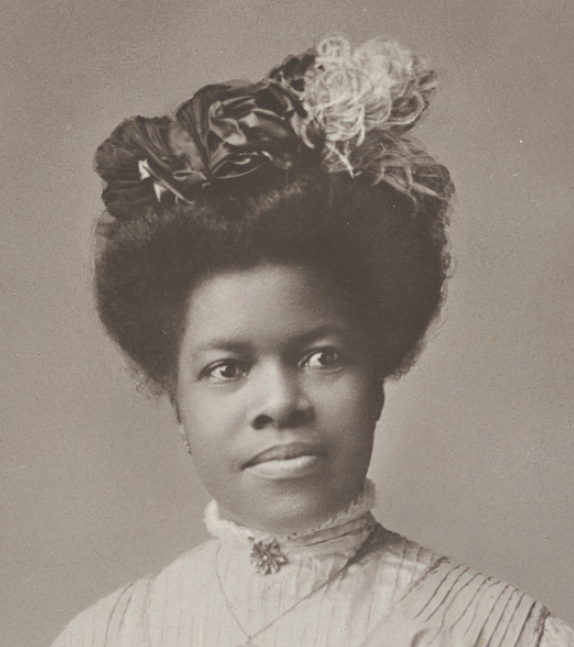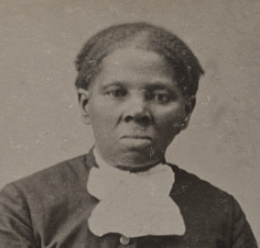This learning activity uses multiple types of sources to learn about the Rehabilitation Act of 1918. In addition to looking at what became of disabled soldiers when they returned home, the activity also asks students to examine ideas about disability.
*Note: Before starting this exercise, discuss respectful language and historical terms (like crippled) which are considered offensive today.
Consider starting with the Observe, Reflect, Question approach to analyze the photographs, manuscripts, and newspaper articles.
---
Background Information
-The Institution for the Crippled and Disabled started in 1917 as a charity program in New York City run by the American Red Cross. They were inspired by the rehabilitation work being done during World War I in Europe, which the Red Cross was also involved with. In 1919, the Institute released a poster series promoting the rehabilitated of disabled soldiers. I’ve included a couple of them in this album, but 18 posters can be found on the LOC website.
-In 1918, Congress passed the Soldier’s Rehabilitation Act (also known as the Smith-Sears Act) to provide federal money to train/reeducate disabled veterans and help them find jobs. In 1920, the Civilian Vocational Rehabilitation Act (also known as the Smith-Fess Act) expanded these rehabilitation programs to all disabled Americans, including civilians. This website provides a nice overview of major disability-related laws, including these rehabilitation acts.
-Additional information about World War I rehabilitation programs can be found in this LOC exhibit on World War I.
---
Potential Discussion Questions
- What was the purpose of the 1918 Rehabilitation Act? What did lawmakers hope to accomplish for individual disabled people and for the country?
- What factors influenced this rehabilitation act being passed during World War I, instead of during a previous war?
- What was the purpose of the poster series? Who do you think was the intended audience?
- What ideas about disability were expressed in these photographs, posters, and laws? Provide specific examples from the sources.
- This could be a good place to introduce students to the medical/rehabilitation model of disability. There’s a good description of it (including a helpful illustration) here.
- What does the term “usefulness” mean in this context? Why do you think it was important to people to be considered useful?
Additional activities:
- Students can research additional articles about rehabilitation in Chronicling America. Encourage students to look at how rehabilitation changes over time.
- Students can conduct research in the Veterans History Project to learn more about veterans’ experiences with rehabilitation programs. The project includes interviews with veterans from WWI, WWII, Cold War, Korean War, Vietnam War, Persian Gulf War, Afghan War, and Iraq War.
- If you want to do a deeper dive on ideas about rehabilitation during WWI, this blog post from the New York Academy of Medicine Library provides more information. You can find Douglas McMurtrie’s The Disabled Soldier (referenced in the blog post) in the LOC collections.
---
This source set can be put into conversation with:
-lessons on the impacts of World War I
-discussions about the changing role of the government in Americans’ lives during the Progressive Era
---
Alt text for the photographs is available on the LOC website. Alt text for the newspaper articles is available in the reference note section for each source.
Replies displayed by creation date
For more great photos on this topic check out  Mary Johnson
’s album “World War I Era Disability Photos” (https://tpsteachersnetwork.org/album/26507-world-war-i-era-disability-photos)
Mary Johnson
’s album “World War I Era Disability Photos” (https://tpsteachersnetwork.org/album/26507-world-war-i-era-disability-photos)
Testimonials
- I love that there is new info on the site daily!
- I had a wonderful time working with the Library of Congress and learning about all of the resources at my fingertips!
- The TPS Teachers Network has an equal exchange of ideas. You know it's not a place where you're being judged.
- My colleagues post incredibly fine resources and ideas....the caliber of the suggestions and resources make me feel that I take a lot from it. It's a takeaway. And I hope that I can give back as much as I get.
- Going into this school year, I have a fantastic new resource for my own instruction and to share with my colleagues!
- I am very glad that I discovered the TPS Teachers Network through RQI. Great resources can be hard to find out there on the internet!




